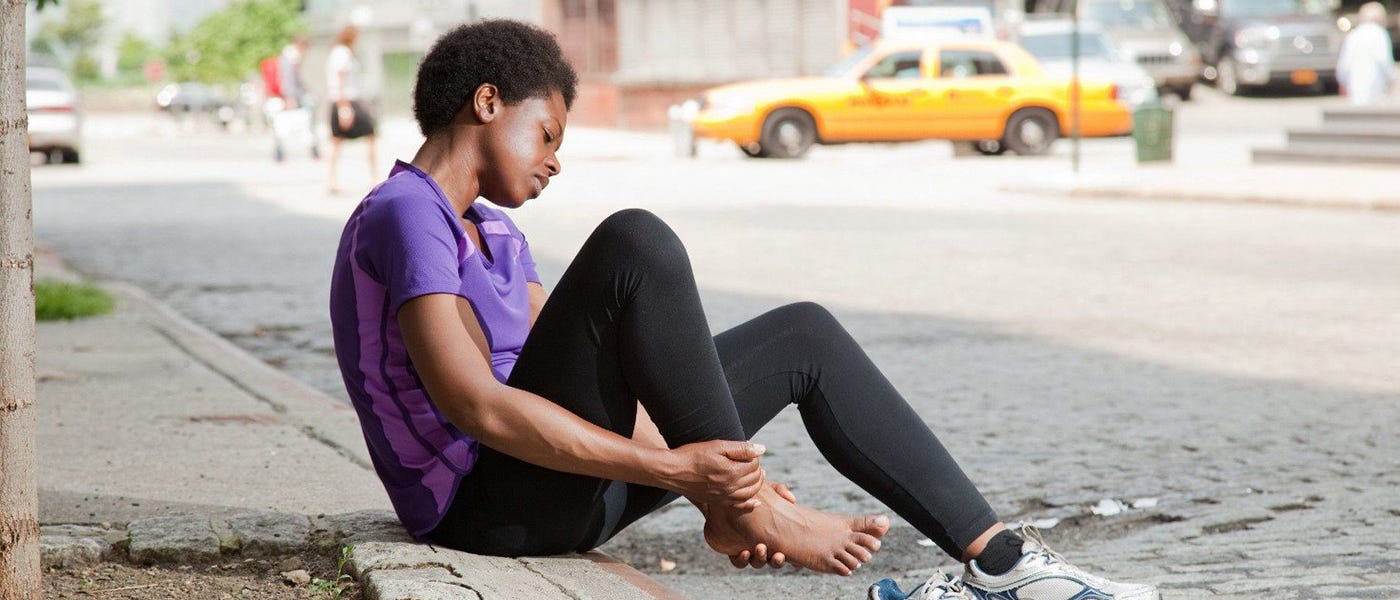
For many, running is rewarding. But, it can be a punishment too.
The repetitive nature of running takes a toll on the body. Aches, pains, and injuries are common. Your feet, legs, and back bear the brunt of your workout.
Fortunately, Bruggemeyer’s Osteopathic Practice wants to keep you on the right foot. The London-based practice specializes in stress-related and sports-induced injuries. For 27 years, they have provided specialized service, treating the spine, joint, and muscle pain with a variety of medical and holistic approaches.
These injuries can range in severity. Bruggemeyer’s Osteopathic Practice shares seven common running injuries and how best to treat them.
Contents
Runner’s Knee
Patellar tendonitis is so common amongst athletes that it’s earned the nickname of “runner’s knee.” Resulting from overuse, this pain around the kneecap is often caused by prolonged running or jumping. It can also be attributed to weakness in muscles around the knee or hip. Rest is the best treatment. Bruggemeyer’s Osteopathic Practice also recommends cross-training. This facilitates prevention by strengthening the surrounding muscles.
Achilles tendinitis
This issue refers to inflammation in the tendon that links the heel to your calf muscle. Suffers will experience swelling in the tendon, dull pain right above the heel, and a limited range of flexibility in the foot. Tendinitis typically develops when running intensity or mileage has been increased too quickly. If pain persists, get checked immediately. When left untreated, Achilles tendinitis increases the risk of rupture and ultimately surgery to repair it.
Plantar Fasciitis
Plantar fasciitis can be especially painful. This ailment is a common foot injury, caused by degeneration of the foot’s tissue, known as the fascia. Symptoms usually include pain in the heel while walking or a burning sensation at the bottom of the foot. This builds gradually and is likely worse in the morning. Focusing on balance activities and alleviating muscle tightness are key.
IT Band Syndrome
The iliotibial (IT) band is the tissue that connects the outer hip and knee. This helps stabilize the knee during walking or running. IT Band Syndrome occurs when repetitive friction and rubbing along the leg bone exists. While this brings sharp pain, this syndrome could be the result of several factors. It’s important to see a specialist, like Bruggemeyer’s Osteopathic Practice, to first determine a cause.
Shin splints
This is a bone stress injury. Like Achilles tendinitis, this is often caused by increasing the volume of workouts too fast. Sufferers face pain at the shinbone along the tibia. Although painful, shin splints aren’t serious. Symptoms typically go away with rest, stretching, or using a foam roller.
Hamstring injuries
Hamstring injuries are a general category that could be a strain, pull, or complete tear of the muscle. Fibers in the hamstring slowly weaken over time. Distance runners are most likely to only ever experience strains.
Ankle sprain
An ankle sprain results from ligaments being overstretched. Usually called a “rolled ankle,” these injuries happen most often when you land on the outer part of the foot. It comes with discoloration, swelling, and bruising. Although these injuries could take months to heal, Bruggemeyer’s Osteopathic Practice encourages rest, self-care, or physical therapy.
